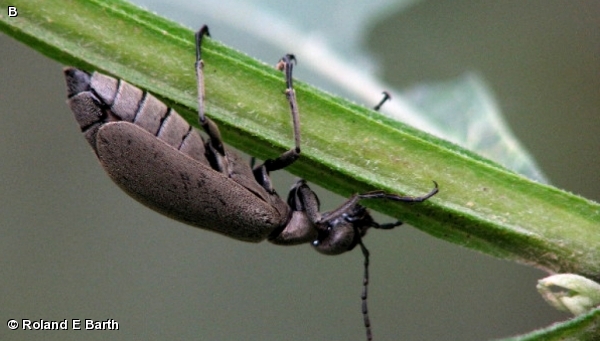
Blister beetles vary by species in shape, size (3/8 to 1 inch long) and color. Most have long, cylindrical narrow bodies that have heads that are wider than the first thoracic segment (pronotum). These beetles are soft bodied and have round heads and long legs. The antennas are threadlike or beadlike. The genus Epicauta includes beetles that are velvety gray, tan, and black or a combination of these.
Blister beetle species feed on flowers and foliage of a wide variety of crops including alfalfa, ornamental plants, potatoes, soybeans, garden vegetables and other plants. Its occurence in Fontenelle Forest is unknown.
This genus includes 173 species north of Mexico. When squeezed, the adults secrete a skin blistering irritant in a defensive tactic called reflex bleeding. Cantharidin is the harmful chemical agent. Poisonings have also been reported after handling blister beetles. The larva of blister beetles are insectivorous mainly attacking bees although a few feed on grasshopper eggs.
Disclaimer: The content of NatureSearch is provided by dedicated volunteer Naturalists of Fontenelle Forest who strive to provide the most accurate information available. Contributors of the images retain their copyrights. The point of contact for this page is: Eric Scholar.


